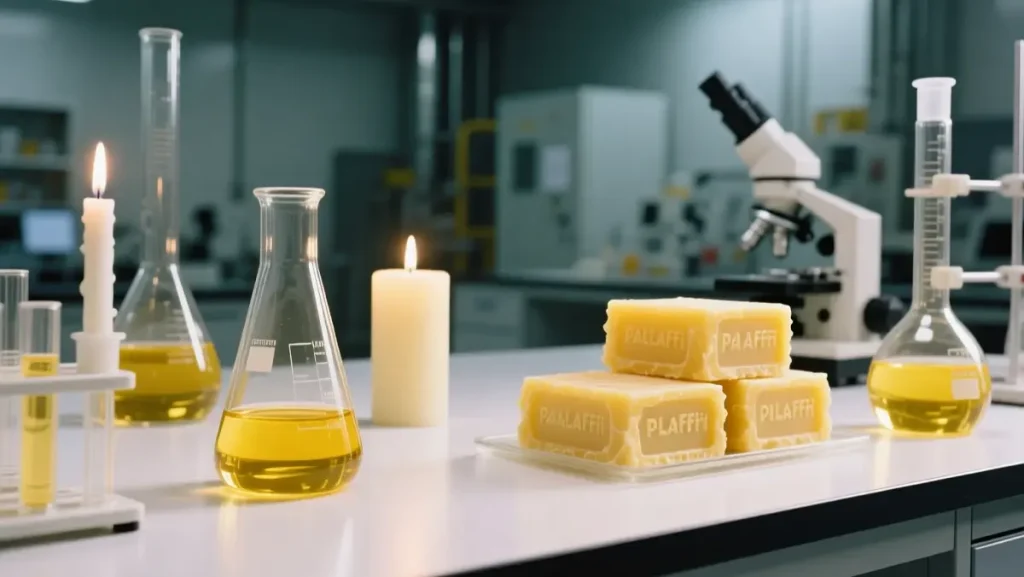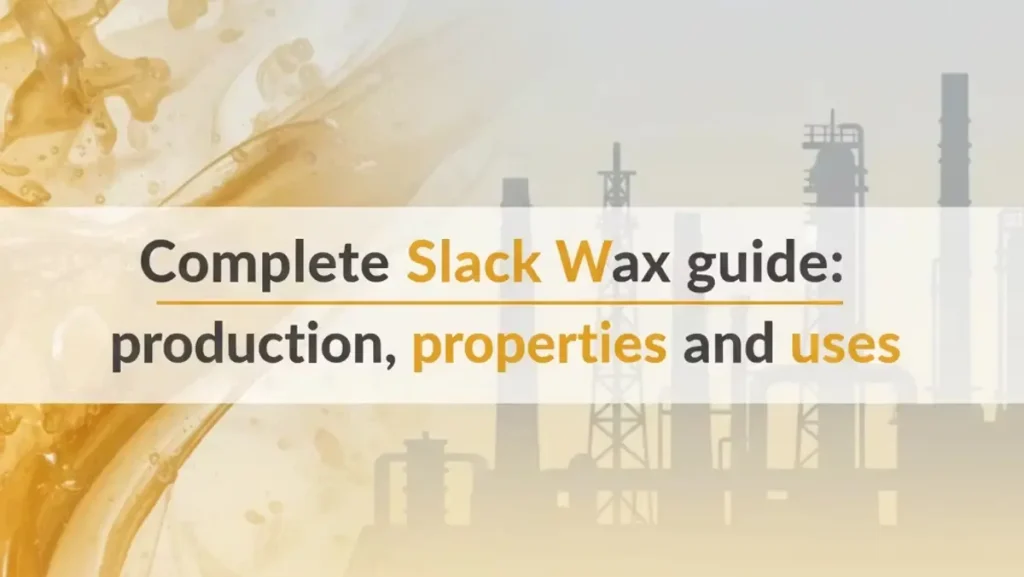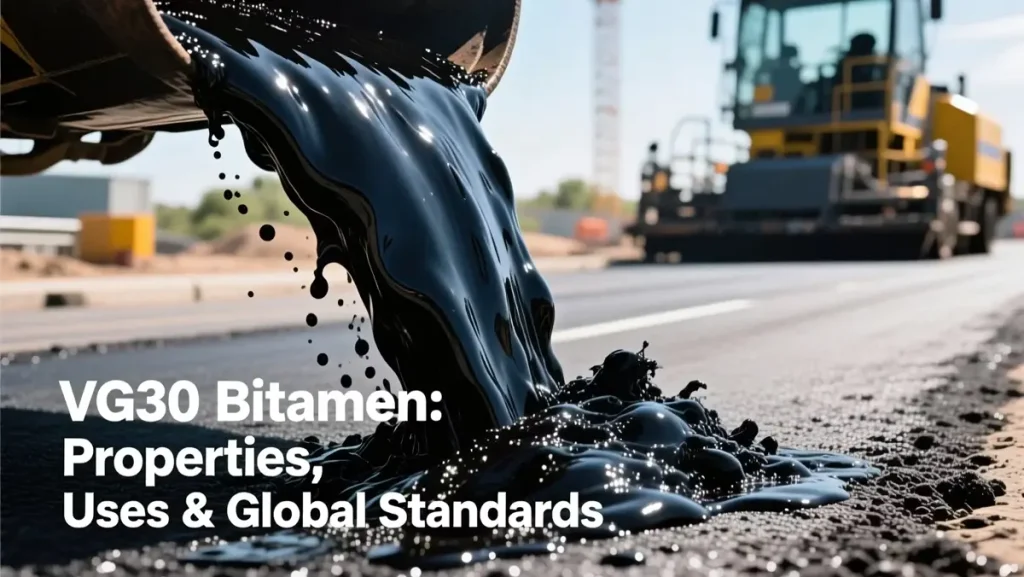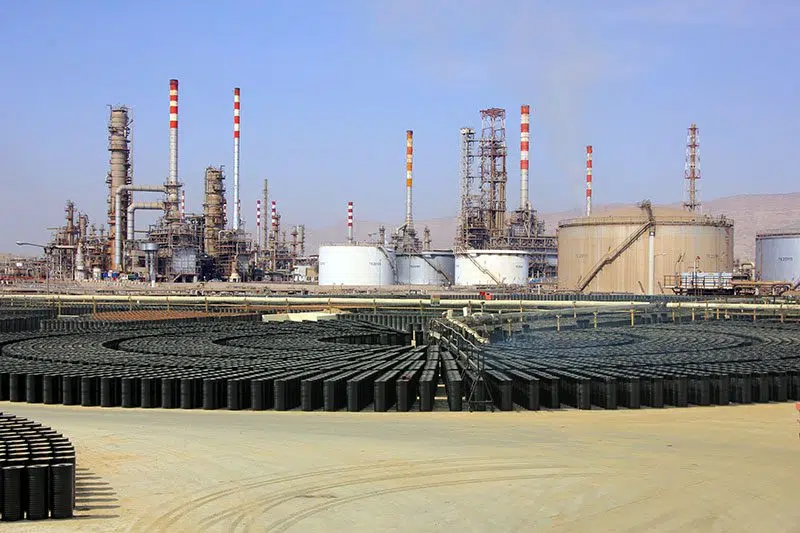Paraffin is one of the most widely used petroleum-based materials in modern industries and households. It is known for its chemical stability, wide range of physical forms, and multiple practical applications — from candles and packaging to cosmetics and insulation.
Derived mainly from petroleum and natural gas, paraffin plays an important role in both large-scale manufacturing and daily life. Its low reactivity makes it safe and reliable for various industrial processes, while its insulating and sealing properties are valuable in household products.
Understanding what paraffin is and how it works helps us appreciate its role in industries such as construction, food preservation, and skincare. This comprehensive guide covers its chemistry, classification, main uses, safety issues, and environmental considerations in an educational and technical context.
Definition and Chemistry
Paraffin refers to a group of saturated hydrocarbons known as alkanes, with the general formula CnH₂n+₂. These compounds can exist as gases, liquids, or solids depending on the number of carbon atoms in their molecular structure.
- Less than 5 carbon atoms: Gaseous form (e.g., methane, propane, butane).
- 5–15 carbon atoms: Liquid form, commonly called liquid paraffin or kerosene.
- More than 15 carbon atoms: Solid form known as paraffin wax.
Paraffin Wax
Paraffin wax is a white, odorless, tasteless, and waxy solid composed of hydrocarbon chains containing 20–40 carbon atoms. It typically melts between 46°C and 68°C, is chemically stable, and insoluble in water. This form is widely used in candlemaking, electrical insulation, pharmaceuticals, and food coatings.
Liquid Paraffin
Liquid paraffin—also called paraffin oil, mineral oil, or kerosene—is a mixture of hydrocarbons that boils between 150°C and 275°C. It is clear, colorless, and often refined for applications such as lubrication, fuel, and medical use as a mild laxative.
Both solid and liquid paraffin are valued for their non-reactive nature, clean burning properties, and long shelf life, making them essential in industrial and household environments alike.
Classification of Paraffin
Paraffin can be classified into several types based on oil content, degree of refinement, and melting point. Each type serves different industrial or domestic functions. The table below summarizes the main classes of paraffin and their technical properties.
| Type of Paraffin | Description | Oil Content | Melting Point (°C) | Appearance | Typical Uses |
|---|---|---|---|---|---|
| Slack Wax | Raw, macrocrystalline paraffin containing high levels of oil. | 10–35% | 50–60°C | Yellow to brown | Base material for refining, lubricants. |
| Scale Wax | Intermediate product in paraffin refining, cleaner than slack wax. | Up to 6% | 48–57°C | Pale yellow to white | Source for semi-refined wax production. |
| Semi-Refined Paraffin | Partially purified wax used in packaging and sealing. | 0.5–1.5% | 50–65°C | Off-white | Coatings, sealing materials, paper industry. |
| Fully Refined Paraffin | Highly purified wax with minimal oil and odor. | <0.5% | 52–68°C | White | Cosmetics, pharmaceuticals, food-grade uses. |
| Microcrystalline Wax | Finer crystal structure and higher melting point. | Variable | >63°C | Hard, tacky texture | Rubber, adhesives, precision coatings. |
| Liquid Paraffin | Hydrocarbon fluid also known as mineral oil. | N/A | Boiling 150–275°C | Transparent | Fuel, lubricants, cosmetics. |
Industry Standards:
Paraffin quality is tested using international standards such as ASTM D87 (melting point), ASTM D721 (oil content), and ISO 3841 (consistency evaluation). These standards ensure uniform performance and safety for industrial and household applications.
Classifying paraffin into these types helps manufacturers choose the right grade for each application — whether it’s a fully refined paraffin for cosmetics or a slack wax for industrial refining.
Industrial Applications
Paraffin plays an essential role in many industrial sectors due to its versatility, safety, and reliable performance under various conditions. Below are the main industrial uses of paraffin and its derivatives.
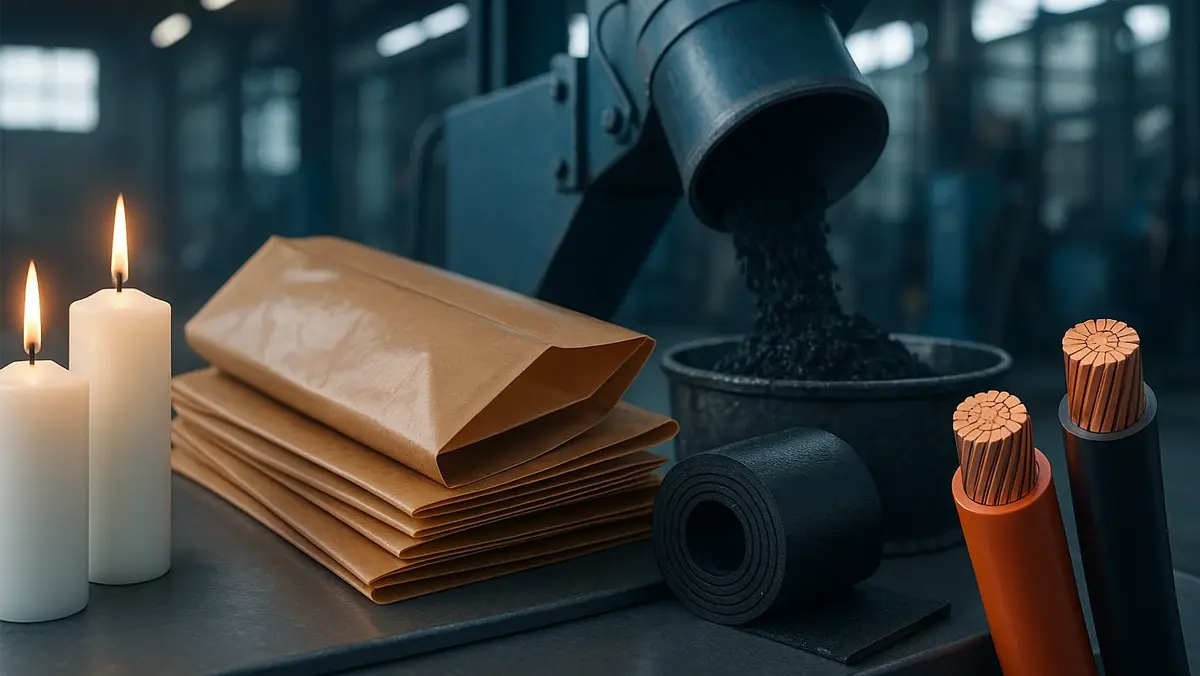
1. Candlemaking
Paraffin wax is the primary raw material for candles because it burns cleanly, holds color and fragrance well, and offers consistent melting behavior. Around 40% of global paraffin consumption is dedicated to the candle industry.
2. Coatings and Packaging
Refined paraffin wax is widely used in paper, cardboard, and food packaging. It provides a moisture-resistant coating that enhances durability, gloss, and shelf life. Paraffin-coated materials are essential in milk cartons, wrappers, and insulation boards.
3. Rubber and Adhesives
Adding paraffin to rubber mixtures improves elasticity and prevents cracking under stress. In adhesives, it helps control viscosity, hardness, and hot-melt adhesive performance, ensuring a longer service life.
4. Asphalt and Construction Materials
In road construction, paraffin additives are used to control temperature resistance and flexibility in asphalt, minimizing cracking in cold or fluctuating climates. It is also employed in sealants and waterproof coatings.
5. Electrical Insulation
Because of its excellent dielectric properties, paraffin is used as a non-conductive coating in electrical cables, transformers, and other components. It provides insulation and moisture protection, ensuring safety and stability in electrical systems.
In summary, paraffin’s low reactivity, thermal stability, and hydrophobic properties make it valuable in diverse industries — from candle manufacturing to modern electrical insulation systems.
Household Applications
Beyond industrial use, Paraffin is also a common material in everyday household products. It is safe, practical, and easy to process — making it a trusted component in food preservation, cosmetics, and cleaning products.
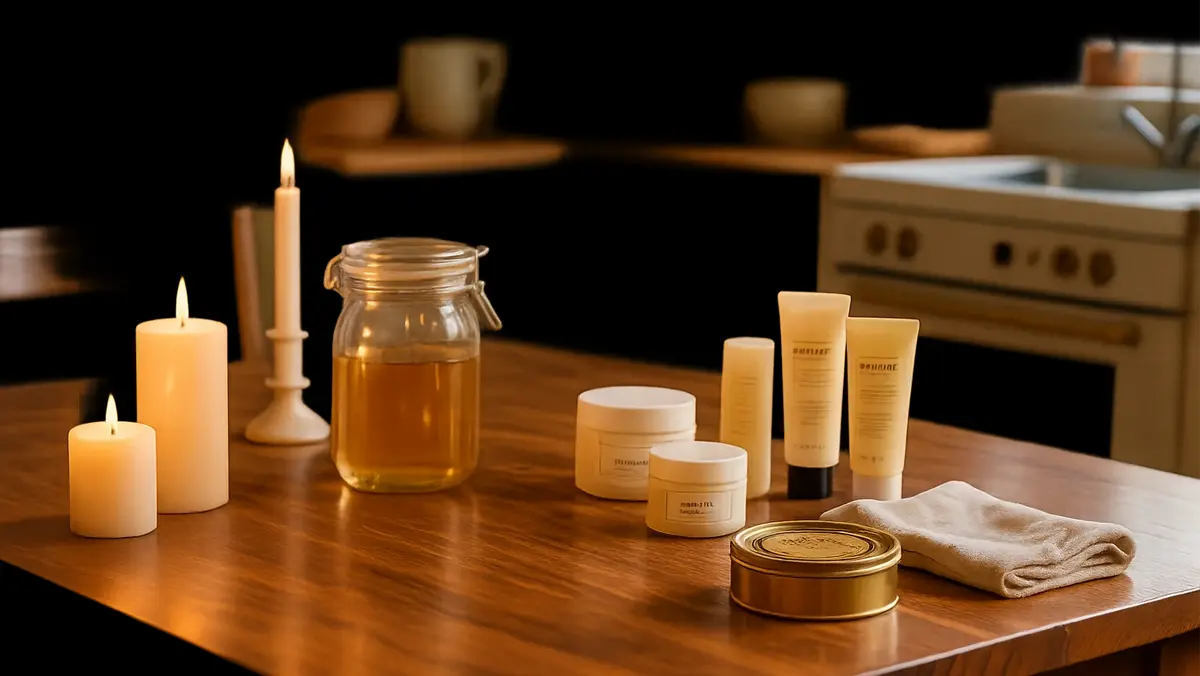
1. Food Preservation
Fully refined paraffin wax approved for food contact is used to seal jars, coat cheese, and preserve fruits. It acts as a moisture and oxygen barrier, helping food remain fresh longer. The U.S. FDA and the European Union recognize refined paraffin grades as food‑safe materials when processed properly.
2. Cosmetics and Skincare
Paraffin wax and liquid paraffin are widely used in lip balms, lotions, and hand creams. They lock in moisture, soften the skin, and improve product texture. In spas and salons, paraffin wax baths are applied for therapeutic heat treatments that relax muscles and hydrate the skin.
3. Cleaning and Polishing
Paraffin‑based waxes are found in furniture polish, shoe cream, and floor treatments. They provide a thin protective layer against dust and moisture, enhance surface shine, and improve durability.
4. Candles and Decorative Use
At home, paraffin candles remain the most popular decorative and lighting choice due to their affordability, fragrance retention, and slow, clean burn. Although alternatives like soy wax and beeswax are gaining popularity, paraffin is still the leading choice for mass production.
In household settings, paraffin combines practicality with safety, offering protection, brightness, and preservation benefits across multiple applications.
Safety and Environmental Considerations
The safety and environmental impact of Paraffin depend largely on its level of refinement and the way it is used. While refined paraffin is considered safe for most applications, certain types and derivatives raise environmental concerns.
1. General Safety
Highly refined paraffin wax is regarded as safe for use in food packaging, cosmetics, and pharmaceuticals. It meets FDA and EU standards for safety and toxicity.
However, when burned (as in candles), paraffin may emit small amounts of volatile organic compounds (VOCs) such as toluene and benzene. These emissions are minimal and generally not hazardous in well‑ventilated areas but may contribute to indoor air pollution in enclosed spaces.
2. Chlorinated Paraffins
Chlorinated paraffins, developed for industrial use in plastics, paints, and metalworking fluids, have become a serious environmental concern. These compounds are persistent, bioaccumulative, and toxic to aquatic organisms. As a result, agencies like the EPA (United States) and the European Chemicals Agency (ECHA) classify them as restricted substances. Many industries are now phasing them out in favor of safer additives.
3. Environmental Impact
Traditional petroleum‑based paraffin is non‑biodegradable and derived from finite fossil fuel resources. Its production contributes to carbon emissions and plastic‑like waste. In response, manufacturers are increasingly exploring eco‑friendly alternatives, including soy wax, beeswax, and coconut wax, which are biodegradable and renewable.
4. Fire and Handling Safety
Despite being chemically stable, paraffin wax and oil are still flammable and must be handled carefully. Spills should be cleaned promptly, and melting operations should occur at controlled temperatures below the flash point to avoid ignition.
In summary, refined paraffin products are safe within regulatory limits, but awareness of their environmental footprint has led to ongoing research toward sustainable and safer wax substitutes.
Conclusion
Paraffin remains one of the most essential petroleum‑based materials used across industries and households. Its stability, low cost, and wide availability have made it a cornerstone for candlemaking, packaging, cosmetics, and electrical insulation.
Fully refined grades ensure safety in food contact and personal‑care products, making paraffin an indispensable material in daily life. However, environmental concerns—especially about non‑biodegradability and emissions from candle burning—are driving industries toward renewable substitutes such as soy wax, beeswax, and coconut wax.
In the years ahead, the focus is shifting from traditional petroleum‑derived paraffin to eco‑friendly solutions that maintain the same properties while reducing carbon impact.
FAQ
Q1: Is paraffin safe for food contact?
Yes. Only fully refined paraffin wax that meets food‑grade standards is approved for direct use in food packaging and coatings.
Q2: Are paraffin candles harmful?
Not significantly. Occasional use is safe, but poor ventilation can lead to minor emissions of VOCs. Using high‑purity wax and cotton wicks reduces risks.
Q3: Why are chlorinated paraffins restricted?
Because they are toxic to aquatic life and do not easily degrade, leading to long‑term environmental persistence.
Q4: Is paraffin eco‑friendly?
No. Conventional paraffin is derived from fossil fuels and is not biodegradable. Eco waxes like soy wax or beeswax are better alternatives.
Q5: What are common alternatives to paraffin?
Popular substitutes include soy wax, beeswax, coconut wax, and carnauba wax, all offering renewable and biodegradable properties.


